

|
|
 |
|
|
|
Participating Artist |
|||
| Ali Bramwell | Max Buhlmann | Tom Vink | Kim Jong Gu |
| Alois Schild | Paul Donker Duyvis | Iliko Zautashvili | Kim Wha Jin |
| Biro Jozsef | Pietertje van Splunter | Gordana Andelic | Lee Kwang Ho |
| Erik jan Ligtvoet | Harold De Bree | Jusuf Hadifejovic | Pang Hyo Sung |
| Jessy Rahman | Elisabeth de Vaal | Geeske Harting | Chae Myung Sook |
| John Lyall | Rachel Bacon | Kazunori Kitazawa | Kam Yeon Hee |
| Hose Den Hartog | Susanne Muller | Ursula Stalder | Shin Yong Gu |
| Park, Byoung-Uk | Park, Hyun Hyo | Kim Nan Young |
|
|
|
|||
|
Nature & Environment Survey |
|||
|
Venue ; Samangeum Tidal Flat, Gogunsan Island Group |
|||
|
|
|||
| Briefing : | Mr. Yeo Gil Wook ( Secritary of Korean Federation Environmental Movment ) |
|
|
Ms. Kim Jung-Im ( Volunter of KFEM ) |
|
|
|
|
Saemangeum Tidal Flat as a school for learning nature |
|
|
Lerning nature ; An experience programm for Artist in the Saemangeum tidal flat |
|
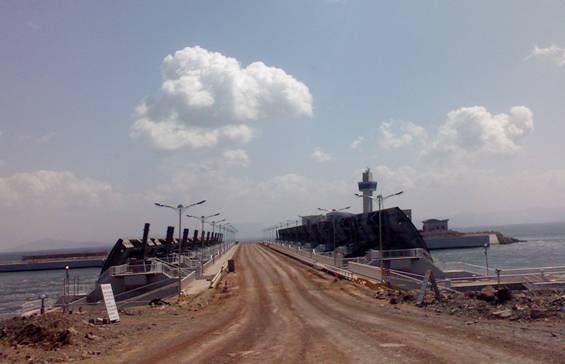 |
|
Front of Saemangeum Embankment |
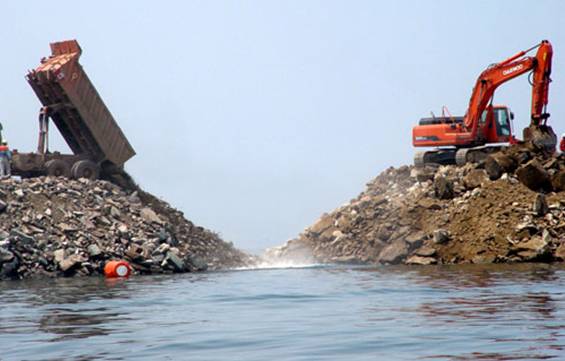 |
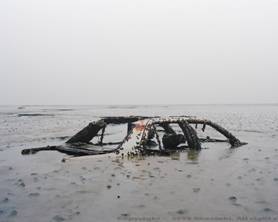 |
 |
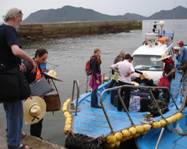 |
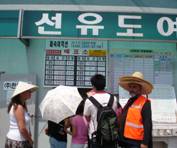 |
 |
 |
 |
 |
 |
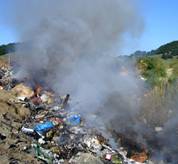 |
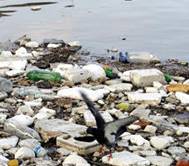 |
|
Samangeum Overview of the Project |
|
The Saemangeum project connects Gusan to Buan by constructing the 33 km long sea disks. |
|
It creates 28.300ha of land and 11.800ha of freshwater lake. |
| * The Project has been on the floor since global food crisis occurred in the early 1970s and the raise of |
| food imports caused by poor harvest because of the cold weather in the early 1980s |
| * In the middle of 1980s, project feasibility study, environmental impact assessment, public opinion |
| hearings, obtaining public water reclamation license and other related procedures has been carried out, |
| after which in November 1991 the work began |
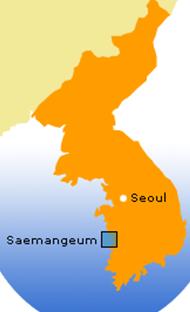 |
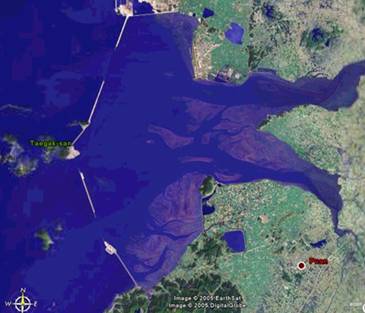 |
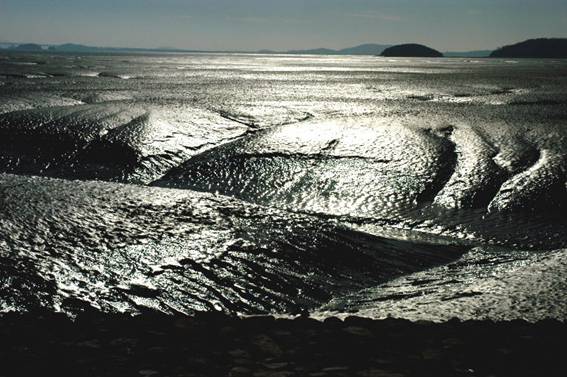 |
|
|
THE SAEMANGEUM MUD FLAT SHOULD BE ALIVE |
|
|
Mudflats are unique natural environments located throughout the world. They provide housing and feeding grounds for a wide range of marine life, animals and birds. Mudflats recharge water table levels, act as natural filters for polluted waters and protect the coast from storms and typhoons. Thus, the importance of preserving these unique areas benefits not only nature, but human kind. In 1971, the international community recognized the importance of mudflats and their need for protection in the Ramsar Convention. There, one-hundred and seventeen nations participated in the Convention and designated one-thousand and eleven mudflats throughout the world to be rotected. Korea signed onto the Convention in July 1977 and designated theYong Wetlands inDaeamsan and Upo Wetlands in Changyoun for preservation. However, the Korean government failed to protect these mudflats and instead, deemed them as high priority areas for potential economic development. Unlike other signatory countries, Korea failed to recognize the importance of mudflats. Rather, Koreans regarded the mudflats as non-productive lands with no monetary or biological value. As a result, the Korean government and corporations exploited the mudflats for commercial purposes. Mudflats were destroyed and precious marine life, sources of water and buffer zones were lost. In contrast, in Germany, the German government designated their mudflats as national parks in order to protect them. This preserved Germany's mudflats and allowed the unique environment to sustain and flourish. |
|
|
|
|
|
Increased public awareness and the imminent loss of the Saemangeum mudflat has changed Koreans perception of mudflats. Saemangeum is located in the southwest part of Korea and considered one of the world's five most ecologically important mudflats. |
|
|
|
|
|
It is a unique natural environment that is the feeding ground for migratory birds that spend the winter in Australia and summer in Siberia. Despite this fact and Korea being a signatory to the Convention, Saemangeum is near extinction and this has led to much criticism from outsiders. Thus, like Germany, Korea must protect and preserve the Saemangeum mudflat and the Saemangeum project should be terminated before the natural environment of the mudflat is forever. |
|
|
1 The Saemangeum region, including Gunsan, Kimje, and Buan, is an internationally |
|
|
important wetland. |
|
|
The Saemangeum mudflat is located between the Mankyung and Donggin Rivers. The flowing water of the rivers provides rich nutrition and food to many kinds of sea-life where 1 square meter of mudflat can house thousands of marine creatures. More than 50% of waterfowl and snipe visit the Saemangeum mud flats every spring and autumn for feeding and nesting. As mentioned above, this mudflat is also the feeding grounds for seasonal birds hatching in Siberia and staying in Australia during the winter. The Saemangeum Project would destroy bird's migratory feeding and resting habitat, and destroy this unique environment created by the mudflat.. In May 1999, the 7th Ramsar Convention was held in Costa Rica. International NGOs criticised the Korean government for its lack of a strong environmental policy and how the Saemangeum Project damaged the ecology of the coastal wetlands. Therefore, the Ramsar Convention Committee and NGOs urged the Korean government to protect the environment, stating that "the declaration for preservation of wetlands and its developmental protection," against the economic development plan for this area. |
|
|
|
|
|
2 Saemangeum project waste unbearably heavy tax |
|
|
The budget for the Saemangeum Project increased from 8,200 million to 2 billion 2,137 million won. The construction and equipment budget for improving water quality was 8,200 million won and the budget for constructing sanitary facilities was 6,506 million won (source from North Jeonla province). But, the budget for improving water quality increased to 1 billion 251 million won. Therefore, to stop the waste of tax payers' money and to save the environment, the project should be stopped. In the cost-benefit analysis, the Saemangeum Project over estimated its economic benefits. Most national projects underestimate the budget at the beginning, but after launching the project, construction costs escalate and additional funding is needed for completion. The major benefit of this type of project goes to the construction companies doing the work, not the taxpayers. According to the Ministry of Agriculture, 30,000 ha of farmland disappear every year due to changes in land use. Much of this land goes into urban land use for residential, commercial, or industrial purposes. Instead, we should emphasize preservation of farmland rather than destroy it. Persons in charge of the Saemangeum Project argue that it will create 28,300 ha of farmland, but this argument overlooks the damage to the environment, regional communities, and the waste of tax money. No Korean wants to spend over 4 billion won to damage the ecology and environment of our wetlands. |
|
 |
|
|
Increased current budget condition for Saemangeum project |
|
| 3. Saemangeum is the second such project. The Shiwhaho project was the first. | |
| Most Koreans remember the disaster of the Shiwha Lake Project. In 1996, Shiwha Lake, a former mud flat, was blocked and eventually destroyed all aquatic life. In response, the Environmental Minister, Jung, Jong-Taek, spent 5,000 million won to improve the water quality of Shiwha Lake and rectify the damages the project caused. However, Shiwha Lake did not improve and much like Saemangeum, tax payers money was wasted. The Ministry of Agriculture argues that the Saemangeum Project differs from the Shiwha Lake Project and would not result in the same disaster - but the only difference is in size. Saemangeum mudflat is two times the size of Shiwha Lake and would result in an ecological tragedy that twice as big as Shiwha Lake. Additionally, the North Jeonla government (local province) supports the Saemangeum Project because the land would be used for economic production, but this is not the case. The Ministry of Agriculture's method to improve water quality is similar to that of Shiwha. Thus, this project must be stopped as it will only cause irreparable damage to environment. | |
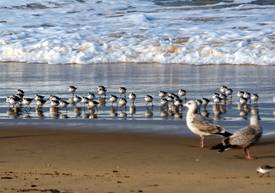 |
 |
|
4. Saemangeum exploitation-project destroys sea and land life. |
|
|
The Saemangeum exploitation project will inevitably destroy the ecological system of the coastal wetlands and requires a huge amount of stones for building the sea-dike. These two issues have resulted in much international criticism of this project. In 1999, Parliamentary Member Lee Mikyung (Ministry of Agriculture, Korean Water Resource Department) and 9 local communities reported that building the 106.3 km of sea-dikes in Saemangeum and Shiwha Lake required exorbitant amounts of soil and stone. One-hundred and fifty mountains had to be levelled and destroyed by the excavation. |
|
|
|
|
|
The Saemangeum Project will construct a 33 km sea-dike using 19,474,000 sqm of material. This will require 130,000 15-ton trucks to remove rock and soil from three major mountains: Haechang, Shinsi and Viung. In particular, 3,838,447 sqm of material was exploited from Haechang National Park. The fact that 19,474,000 sqm of stones and soil was exploited for building 18 kms of sea-dike tell us that to complete the 33 km sea-dike an additional 16,228,333 sqm of material is needed. In addition, the internal construction of the sea-dike will require an infinite number of stones. The Saemangeum Project is not only destroying the sea-environment, but also mountain land-areas. Since 1985, 20 exploitation projects used 88,691,736 sqm of stones from 150 small and large mountains in Korea. And 19 exploitation projects excavating 52,989,403 sqm of stones is needed for building a 33 km sea-dike. Therefore, we can conclude that stones needed for the Saemangeum project are 68% of the stones required for the former 19 projects. This calculation indicates that the Saemangeum Project would be the largest exploitation project in the world, resulting in damage to the mountains, coastal wetlands, and national parks. |
|
 |
|
| SOS (Save our Saemangeum wetlands) campaign by KFEM members at Saemangeum | |
|
5. The People in North Junla province protest the Saemangeum project because of the damage to their regional communities |
|
| People in charge of the Saemangeum Project argue that the people of North Junla Province support the Project. However, this is not completely true. When the project was first proposed, local support might have existed because of alleged inflated benefits of the Project. But, after the Shiwha Lake disaster, many local residents realized that the Saemangeum Project would eventually destroy their environment. Thus, the local people launched a consolidated effort to stop the Project. Since 1996, the Korean Federation for Environmental Movement (KFEM) studied the people living in Shiwha Lake area. KFEM published its findings in a book titled What Happened to the People in Shiwha lake? This book showed that the people of Shiwha lake initially believed that life would better with the completion of the project. This belief was based on the government's promised benefits from the project. However, after completion of the project the Shiwha Lake residents had to flee their homes and earn a living elsewhere. People in Gunsan, Kimje, and Buan in North Junla province have also begun to flee their homes for the past 10 years as in Shiwha Lake. On 15 March 2000, one thousand people in Buan County held a media event demanding the termination of the Saemangeum Project and to restore community life. This action directly connects protection of the regional communities, with totempole festivals and the campaign for preservation of Saemangeum mudflat. "The people protesting the Saemangeum Project" launched in 2000 and we expect that anti-project campaign to spread through out the province. This campaign will demonstrate the government's intention to damage regional communities and force them out of their hometowns. | |
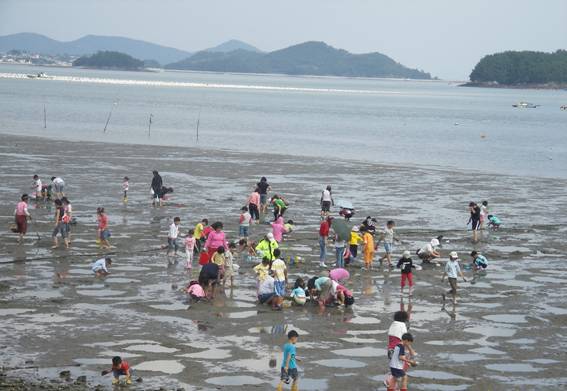 |
|
|
6. The Saemangeum Project is for the Ministry of Agriculture |
|
|
The Saemangeum Project faces opposition from the public and the local area residents while the Ministry of Agriculture wishes to continue it. The Ministry tries to create the impression that after the completion of the sea-dike, a mud flat will exist and house all kinds of life. This is partially true as a mud flat will form ten thousand years or more later. Additionally, the sea-dike will change water flow and cause coastal land to sink. The Saemangeum natural environment will be forever changed. According to Korean Environmental NGOs, many people in North Junla Province demand the repeal of the Saemangeum Project while the Ministry of Agriculture attempts to show the necessity and importance of the project thru the press and public. This material from the Ministry seeks support for current projects from the local people and the media. In February 2000, Mun, Dong shin, the Chairman of Korea Agricultural & Rural Infrastructure Corporation(KARICO), reported the status of the Saemangeum Project to the Blue House (Presidential House). In his report, the Chairman stated that if the Saemangeum Project is not repealed, Korea would waste national tax money, damage environment and lose the trust of the public. According to statistics in 1989, 5,899 tons of shellfish were harvested from the Saemangeum mudflat But in 1996, this harvest decreased by 84,5% to 978.4 tons. For instance, the short-necked clam harvest decreased from 1,000 tons to 60-70 tons. After completion of the sea-dyke, all kinds of wildlife such as shellfish, seabirds, and earthworms would disappear from the mudflat. Thus white-shellfish and short-necked clam could not be caught and sold in the market in Buan County. As a result, the North Junla local government and the Ministry of the Agriculture are threatening the Blue House and Koreans to sustain their project that is wasting a large amount of tax money. Therefore, we can no longer remain silent about the Saemangeum Project's waste of tax funds and damage it causes to the environment and regional communities. We must remember that the Saemangeum mudflat is a valuable heritage from our ancestors. This heritage must be passed down from generation to generation to enjoy. Therefore, we declare that the Saemangeum mudflat must be preserved to keep the mudflat alive. |
|
|
|
|
|
|
|
|
Date : 7th . June~ |
|
Performance |
|
|
|
|
|
Performance by Quartair ( Jessy, Paul, Tom. Erik, Rachel, Elisabeth, Pitertje, Harold, Hose ) In 1653 the first Dutch arrived in Korea; 36 sailor shipwreckend on the Korean coast. They were not allowed to leave korea after 13 years they escaped because of the Korean isolationistic policy at that time. In 1907 the first Korean diplomat came to the Netherlands to protest to the Japanese invasion came to the Hague because one of the first meetings of what was later going to be the united nations was held there. Since 1653 this Korean isolation was doomed to fail and hostile army from abroad, Missionaries, and later Pop Culture, Capitalism, anti Globalist, environmental activist, entered Korea and because of this influenced Korean society to where it is today. With the “Come Ashore” performance we went to symbolize these different influence on Korean society |
|
|
|
|
|
|
|
Please Wait - Wait – Stop Performance by Ali Bramwell |
|
the title phrase was written on a public street using a broom and water. The act was carried out as fast a physically possible, running short distances with the heavy bucket of water between bursts of hurried writing activity. While writing the words in Hangul, I called the phrases out in English simultaneously, becoming increasingly breathless from my efforts. The white pavement held a great deal of ambient heat from the hot day and I had difficulty recording each phrase before it began to evaporate. The speed of the evaporation underlined the meaning of the spoken and written text and lent the activity more intensity. Clearly there was no time to linger, all traces of the activity were completely gone within minutes. The translation of these three phrases in Korean graduated in intensity also. The first was formal and polite, asking courteously for forbearance in the respectful way you would address an elder. Please Wait. the second is phrased more casually and informally, speaking with less respect, an instruction given to an equal. Wait. the last is imperative, it is abrupt and actually rude in tone, an order not a request. Stop! By the time I was writing the last word, sweating and huffing from effort, my audience was also calling for me to cease, without knowing the meaning of the text I was using several persons were asking that I “stop ! ” |
|
|
|
|
“Human Ashore” Performance & Installation by Max Buhlmann |
|
|
|
|
|
“ Come Ashore “ Performance and Installation by Alois Schild |
|
|
|
|
|
“ Jangjado Island’s Hyang-Ga “ Performance by Biro Joszef |
|
|
|
|
|
Concept Exhibition |
|
|
Venue : Fisherman Observatroy at Sunyoudo Island ( small space approximate 3.3m2) |
|
|
|
|
|
|
|
|
Ursula Stalder Jessy Rahman |
|
|
|
|
|
Alois Schild Susanne Muller Rachel Bacon |
|
 |
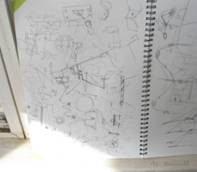 |
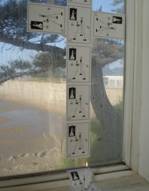 |
| Elisabeth De Vaal | Ali Bramwell | Erik Jan Ligtvoet |
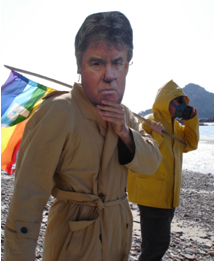 |
 |
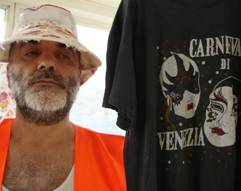 |
| Erik Jan Ligtvoet and Tom vink |
|
Jusuf Hadzifejzovic |
|
|
||
| Pitertje Van Splunter |
|
Hose den Hartog |
|
|
||
| Max Buhlmann | Paul ( Left) Gordana (middle) Jusuf ( Right) Up ( Rachel ) | |
|
|
||
Save Saemangeum Wetlands, South Korea introduce by KIM ,Jung.-Im (Volunter of KEMF) |
||
|
|
||
|
|
||
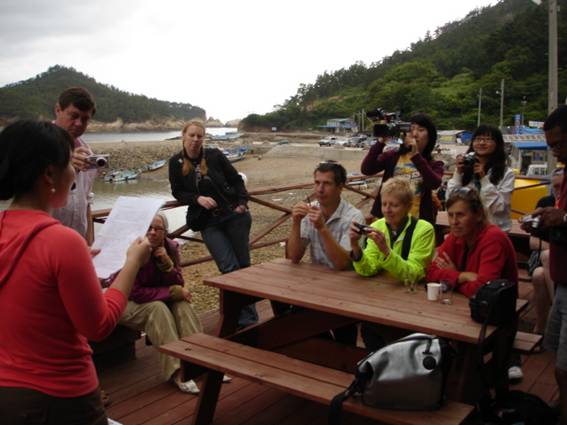 |
||
|
Dear friends from all over the world……. |
||
|
My name is Kim, Jung-im and I am from South Korea, I am very pleased to meet everyone. Currently, I am a 12th grader in Haksung Girl's High School, preparing for the university entry examination. I live in a place called 'Ulsan', which is a highly industrialized city. This gave me a specific interest in the environment ever since I was just a kid, and later I was encouraged to join and volunteer for an environmental group called the Korean Federation for Environmental Movement (KFEM). I learned much about the Saemangeum tidal flat through my activities. When it comes to tidal flats, I used to think about "mud cosmetics" and other frivolous things. But after volunteering, I realized the great importance they have in our lives - serving as a natural sanitation facility, purifying the river, which flows into the sea. Imagine what would happen without them. Our seawater would be so polluted that it would be extremely difficult for fish and other sea creatures to survive. Since I love seafood this would be particularly sad for me. In South Korea we have a sea called the Yellow Sea. And there we have a great tidal flat called Saemangeum, which the government is planning to destroy through reclamation. Four individuals representing religious leaders such as Catholocism, Buddhism, Protestantism and Won-buddhism performed a Three-steps One-bow movement to save our Saemangeum. The Three-steps One-bow is a true meditation, and also a peaceful campaign. Have any of you have ever performed an oriental bow? In Korea, it is a way to show respect to our elders on occasions such as major holidays. The religious leaders performed the Three-steps One-bow from Buan, where the Saemangeum is located, to Seoul, for over two months on asphalt roads. Nobody thought they would succeed. Even young people would have had a hard time with this. But the 4 priests astonished us all. The astonished not only us, but perhaps even the whole world. |
||
|
|
||
| They completed the
Three-steps One-bow in sixty-five days. No one could have witnessed this
movement without tears. This all started out with just the two of them.
As this campaign started to catch everyone's attention, many
citizens joined, including the Minister of Environment and the Minister of
Culture. One
day during lunchtime, I heard the news that Reverend Su-kyoung had fainted;
this really interrupted my lunch. It was probably the hardest time of the
campaign. I fell into tears after thinking about the pain that they were
suffering. A few days later, I heard the surprising news that Revered
Su-kyoung had come out of the hospital to rejoin the
campaign. It was a dangerous situation for the old man to
continue, but he came back on a wheelchair. Why would he
continue fighting instead of taking care of himself? Father
Moon and Reverend Su-kyoung cried for hours when they
entered Seoul
city after about 60 days; just watching them over the
Internet was so touching. It
wasn't a matter of reunion. Those tears were more than a
feeling. Extreme pain, fear, will, love, ... How can this be
expressed in words? So I wanted to
see and feel Saemangeum for myself. It took a long time to persuade my
parents, and then off we went. The fourteen-hour drive knocked us out. It
pained my heart thinking about how hard it was for those who did 3-step
1- bow. If Saemangeum were
to be destroyed, nothing would survive. Eighty percent of the sea wall
construction has already
completed, but the tidal flat is still breathing.
Clams, Crabs |
||
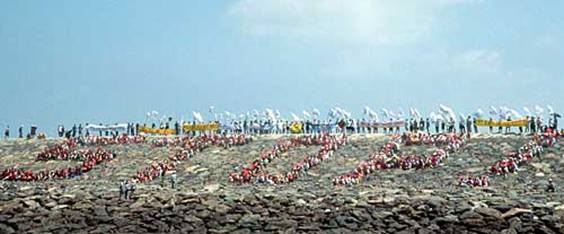 |
||
|
STOP (Save our Saemangeum wetlands) campaign by KFEM members at Saemangeum We volunteer environmentalists could find no answers, even after discussing the issue many times. On Environment Day, June 5th, President Roh announced that the Saemangeum project would be continued, an announcement that further discouraged and annoyed us. At that time, one alternative arose: organizing worldwide sentiment to Save the Saemangeum. We thought that by appealing to worldwide sentiment, we could stop this project. I was so happy when I heard the news that an environmental group in U.S., Global Response, started a worldwide letter-writing campaign on Saemangeum, in addition to sending letters to President Roh. Over 30 International environmental groups like Friends of the Earth International, Sierra Club, Japanese Wetland Action Network, Birds Australia and Third World Network helped our domestic movement and have sent the President Rho over two thousand statements, letters and emails. I felt as if I got a long-waited present from Santa and that the work was finally getting done.^.^ Indeed, environmental groups have struggled hard. They went to Saemangeum and dug up the sea wall and had to fight to defend themselves against the construction personnel, who injured them. There were severe struggles, some became bloody as some pro reclamation residents beat one protestor. We are still sharply divided over the issues. Many local residents near Saemangeum believe that reclamation bring them economic growth through creating new land. To Youth all around the world, why don't you help the struggling Saemangeum to survive? We are young and powerful! The solution
is simple; send an email to your friends, neighbors, and relatives to
request that they join a signature-seeking campaign and send
letters to President Roh. Doesn't it sound easy? In Korea, the Bicycle campaign teams are bringing attention to the Saemangeum project, as a follow-up of the 3step-1bow campaigns. We hope that the Saemangeum project will be stopped with the effort of those at home and overseas. Put forth all our strength! These small steps of us young people can save the Earth for future generations. Let us strive for peace in Saemangeum.
|
||
|
|
||
|
|
||
|
|
||
|
Set up Indoor Exhibition Cheongju Art Center |
||
|
|
||
| Iliko and Max | Ursula Stlader | Jessy, Pitertje, Elisabeth |
|
|
||
| Chae, Myung-Sook & Son | Biro Jozsef | |
|
|
||
| Rachel Bacon | Ali Bramwell | Susanne Muller |
|
|
||
| Elisabetn de Vaal | Kim Wha-Jin | Gordana Andjelic Galic |
|
|
||
| Kim, jong-Gu | Lee, Kwang-Ho and Shin | Kam, Yeon-Hee |
|
|
||
| Ali Bramwell | Paul Donker Duyvis | Max Buhlmann |
|
|
||
| Alois Schild | Susanne and Park | Elisabeth and Curator |
|
|
||
| Shin, Yong-Gu and Gordana Andejlic | Park, Hyun-Hyo | Hose Den Hartog |
|
|
||
| Tom Vink and Pitertje | Kim Nan Young and Lee Kwang-Ho | Pitertje van Splunt |
|
|
|
|
|
|
|
| Korean Tea Ceremony |
Opening Music by Lee, Byoung-Wook & Oulim Group |
|
|
|
| Opening Remarks ; Roland Viotti (Swiss Embassy ) | M.General Gerhard Bruegger ( NNSC ) & So-Young |
|
|
|
Performance by Pang Hyo-Sung |
|
|
|
Performance by Biro Jozsef |
|
|
|
Performance by Chae Myung-Sook |
|
|
|
Performance by Jessy Rahmann and Susanne Muller |
|
|
|
|
|
|
|
Introduce : Paul Donker Duyvis , Harold De Bree, Jusuf Hadzifejzovic, Shin Yong-Gu, Biro Jozsef, |
|
|
|
Performance : Jusuf Hadzifejzovic / Guest : Max Buhlmann, Elisabeth De Vaal, Jessy Rahmann |
|
|
|
Performance : Biro Jozsef / Guest : Kam Yeon-Hee |
|
|
|
|
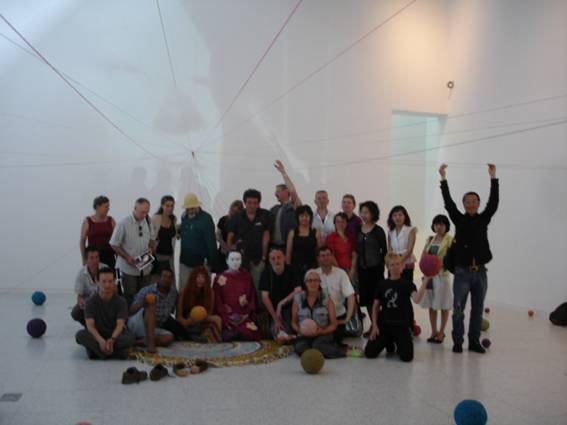 |
|
Performance : Shin Yong-Gu |
|
|
|
|
|
Written By Rachel Barcon |
|
|
|
At the very beginning, I decided not to take any photographs. I usually have a camera with me, a small one, like a mechanical journal for visual note-taking, to use only when I see an interesting crack in the sidewalk, for instance, or an absurd road sign. But the digitalization of the moment, making it possible to take more snapshots than you could ever dream of being able to digest, suddenly got to me. Paradoxically, it’s even my obsession with documentation that made me reluctant to look through the lens; perhaps something to do with a feeling of awkwardness due to the disturbing similarity with hoards of clone-like package tourists, even though we as artists all tend to pride ourselves on being as unique as possible. |
|
To be honest, I’m now sorry I didn’t take more pictures. Because other people’s pictures are just not the same as one’s own, they don’t (can’t) capture the memories in the same way that I recollect them. And in the end, we all seem to want to try to hold onto what we remember about things, especially that which was wonderful and inspiring, like this journey to and through Korea. |
|
So what I’m left with are the images that were too intense, too right, not not to be remembered; pictures that have etched themselves onto my mind’s eye; maybe just call them the some of the best snapshots never made. |
|
|
|
It seems like we have been waiting here forever, we are at the end of the road, deposited here by the touring car, on this rocky outcropping at the edge of the water. |
|
It feels dirty here, this forgotten village with its restaurants smelling of fish and salt, the sad dogs tied up in tiny backyards, little mountains of refuse everywhere, the same collection of the natural and the chemical that is piled up on all the shores of all the fishing villages the whole world over. And we wait and wait. To the people I know I have nothing more to say, and the ones I have just met I don’t know well enough to continue talking to, without there being some activity or incident to comment on. There’s a hole in the day, and I seem to have fallen into it. And then, finally, something happens, all at once there are two boats arriving, one for us and one bearing this queen-like woman, sleek as a seal in a black rubber suit, even though she isn’t young, and isn’t even beautiful. |
|
|
|
I can’t stop looking at her because I’ve never seen anyone before who seemed to be so at home in her own body. She’s middle-aged, with some gray in her hair, but she moves with total confidence on the rocking boat, matching her own internal harmony to that of the waves. As we board our boat to the next island, I hear her talking and joking with the sailors and fishermen, these guys are the rough and ready types, but she looks like she’s just descended from the catwalk, the thick rubber suit the latest in haute couture. Later on, I hear she is a diver for pearls. |
|
|
|
The light is amazing, clear as glass, every detail in high relief, perfect for photography. What I am looking at is not to be believed, a redheaded nun and an Elvis impersonator in a white glitter suit, lolling about in a rubber boat, far enough away from the shore that a benevolent stillness has descended upon us all, a bunch of idiots, really, floating in carnavalesque costume, in our boats a moment of utter peace. |
|
|
|
I have left my camera behind, not wanting it to get wet, so from now on the only place this picture can be seen is in my head. The water is a pure azure blue, out of a brochure for a Caribbean holiday, except we are in the Yellow sea, which is everything but. In the distance I can see little islands sticking up out of the water, doing a perfect impersonation of the ink wash paintings I remember seeing on silken scrolls in museums in Asian art collections, in cities very far away from here. And as we approach the land of the island, where we must reengage with rules and boundaries, for a moment everything even this seems natural, and we are free to be as insane as we like, just for a moment. |
|
|
|
Change, constant change, working itself up into a kind of explosion. We are propelled through the countryside in the bus that looks like a boudoir, purple, blue and silver, everything a blur, until we finally hit the ferry terminal at Pusan. And everywhere we go there are these great things, this amazing stuff; whoever isn’t into buying and selling on street level has got to be crazy. Early in the morning, I am admiring the fantastic sea creatures for sale in the bright plastic bowls; it is a fish market of sorts, only a few women, in colorful rubber boots and aprons selling their wares on the street. |
|
But wait; because the one image I can’t seem to erase is of the octopus: escaping, clever, out of one of those bowls, desperately coiling and recoiling itself over the asphalt towards the edge of the water and freedom when: Tchaka!! The fish seller spies the fugitive with her unflinching eye, reaches out to grab a handful of slender tentacles and whips the octopus back into the container and that evening onto someone’s plate. Nothing is permanent. |
|
|
|
Again, we are all astonished by the food here. In all the e-mails and messages back home we describe first not the art we have seen or made but the details of what we had for dinner the night before, or for breakfast that morning. |
|
The oceans are in grave danger, that much is clear, estuaries, the source of all this richness, being paved over, pollution rampant, overfishing decimating marine life. But to judge by the variety to be found on display next to the raft of restaurants on each seaside boulevard; well, I’d say there’s no reason for panic just yet. |
|
Especially beautiful are the bright red snail-like creatures studded with pure white flakes, looking just like gigantic, lovely, erotic, underwater strawberries. |
|
They form convivial clusters on the insides of the huge street-side aquaria, once in a while soundlessly making their way over the rim of the tank in order to explore the other side of the glass. But, unlike the octopus, I don’t have the sense they are at all aware of the desperateness of their situation, they seem content to serenely await their destiny. |
|
|
|
We, Elizabeth and I, are sitting in the sauna after having taken a dip in the local pool, where everyone neatly, politely swims in ordered rows. The night before, I have had a mini-breakdown. Dissolving into tears in the lobby of the wonderfully and surreally named Hotel Art, with its for us luxurious fixtures and mystifying lack of (other) guests. I have been completely exhausted by the tempo of our journey and the layer upon layer of new histories to absorb. This is just what the doctor ordered, this and the pungent and interestingly flavored gold-leafed medicine administered by a concerned Mr. Park. |
|
It is quite crowded in the sauna, with a chattering group of women busy gossiping and laughing in spite of the intense wet temperature and heat. They seem almost not to notice us until suddenly one of the ladies reaches over to hand us both a ripe tomato, which we bite into as if it were an apple, a little, thrilling piece of paradise. |
|
|
|
At last, a day to be alone, in a city of many millions. It is hot, and the higher the sun gets, the more crowded the streets; they are ugly streets, mostly; like the big cities in the US, made for cars and not for people, with signs screaming out messages I blissfully cannot read but can enjoy for their pure and colorful abstraction. As I walk I am slowly drawn into this bustling familiar and exotic sprawl, each storefront spilling out its guts onto the pavement, offering up whatever happens to be available, underwear, vegetables, back scrubbers, pairs of pressure point massaging bedroom slippers. |
|
|
|
I end up somewhere I would happily spend any Sunday morning, a gigantic flea market in an old stadium, a place despite the fact of being so far away from what I know still seeming infinitely familiar. I spend an hour leafing through boxes of old photo albums, full of group portraits of young men in uniform, I have stumbled upon a sort of military family history. In training camps, engaging in martial arts routines, pre- and post- war snapshots which reveal only speculative fragments about the people in the pictures, a raised eyebrow here, an ironic smile there. On my long walk back to the hotel and our last supper together in Korea, I take a right onto the busiest shopping street in Seoul, as chic and bustling as any I’ve seen today. Except that is for the fixed point of the old man, sitting on a bench with his back to the crowds streaming past; and next to him, a little folding stand like an alter, displaying four-leafed clovers for sale. |